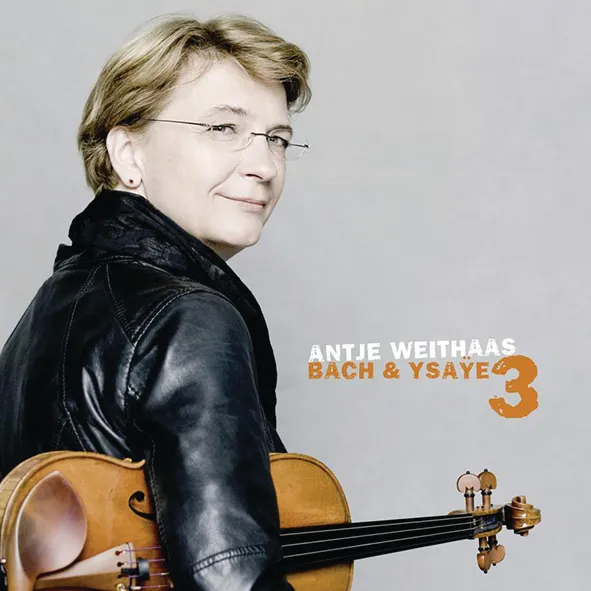
JS Bach • Ysaÿe, Vol 3 JS Bach: Solo Violin Sonata No. 3 in C, BWV 1005; Partita No. 1 in B minor, BWV 1002. Ysaÿe: Solo Violin Sonatas Nos 4 & 6 Antje Weithaas (violin) Avi Music 8553381
The opening Adagio of the C major Sonata (No. 3) is arguably the thorniest movement of Bach’s Sonatas and Partitas for a violinist to unravel technically and make musical sense of. What on paper is an Italianate movement of gently pulsating legato is seemingly undermined at nearly every turn by Bach’s crossed-string harmonic accompaniment – no wonder well-meaning researchers came up with the ‘Bach bow’ in an effort to iron-out the rough edges. By gently cushioning her bow strokes and sustaining double-stops with infinite subtlety, Antje Weithaas avoids the ‘snatched’ effect familiar from even the most distinguished accounts of this extraordinary movement. The tricky fugue that follows is no less pliant in its multiple voicings, exchanging the pseudo-contrapuntal thrust of traditional readings for an exultant sense of wonder that spills over into the ‘double’ variations of the B minor Partita (No. 1).
Weithaas’s bewitching ability to make the violin ‘sing’ whatever the technical pressures involved reaches its apex in Ysaÿe’s one-movement Sixth Sonata. Even the most hair- raising sequences of upward and downward double-stopping sound delectably seductive here.
The Fourth Sonata is dedicated to Kreisler, a fact that many players appear to ride roughshod over, whereas Weithaas embraces the opening Allemande with a golden cantabile that imbues every phrase with warm sensuality. The gentle pizzicatos that frame the contrapuntal intricacies of the central Sarabande sound unerringly like a mistress standing at her spinet in Weithaas’s inspired reading, and she somehow finds time to shape the finale’s restless undulations with a series of exquisite temporal inflections.
Julian Haylock